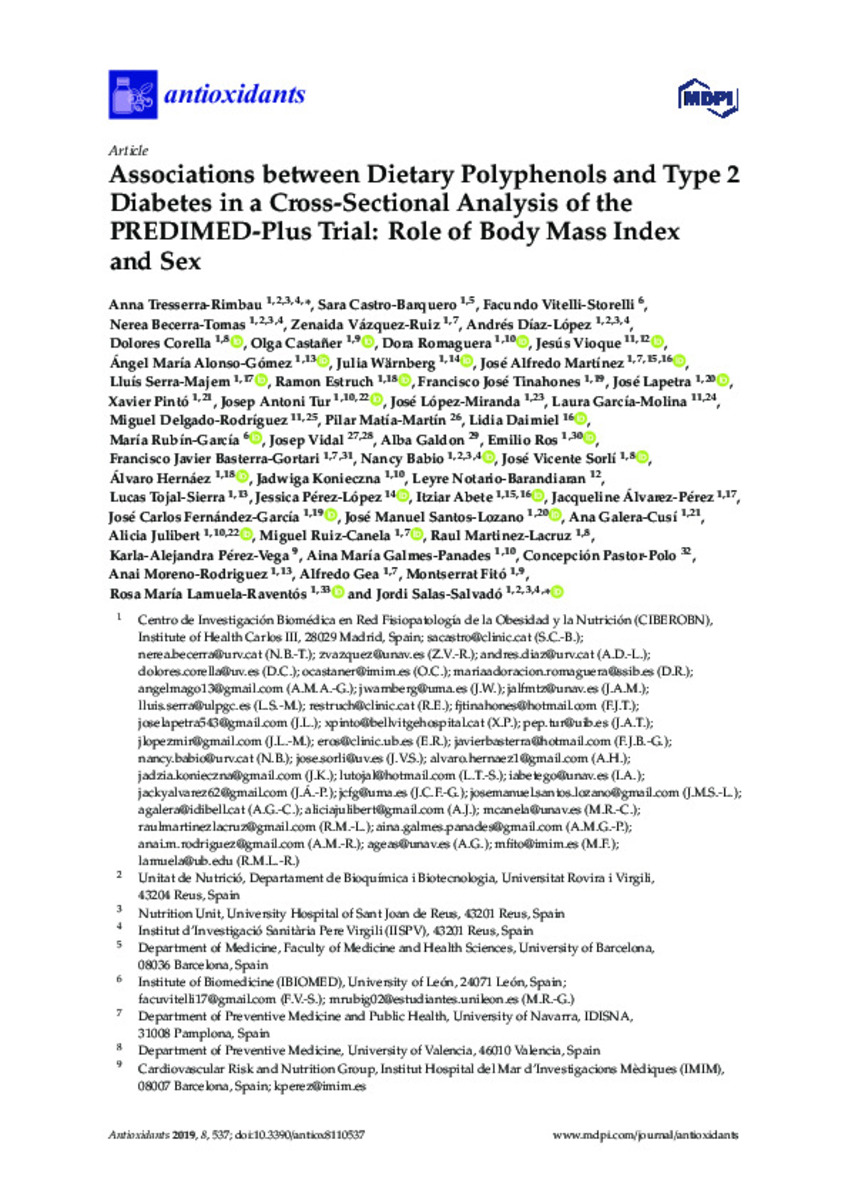Associations between dietary polyphenols and type 2 diabetes in a cross-sectional analysis of the PREDIMED-plus trial: Role of body mass index and sex
Palabras clave :
Diet
Obesity
Flavonoids
Catechins
Proanthocyanidins
Hydroxybenzoic acids
Hydroxycinnamic acids
Lignans
Phenolic acids
Fecha de publicación :
2019
Nota:
This article is an open access
article distributed under the terms and conditions of the Creative Commons Attribution
(CC BY) license (http://creativecommons.org/licenses/by/4.0/).
Cita:
Tresserra-Rimbau, A. (Anna); Castro-Barquero, S. (Sara); Vitelli-Storelli, F. (Facundo); et al. "Associations between dietary polyphenols and type 2 diabetes in a cross-sectional analysis of the PREDIMED-plus trial: Role of body mass index and sex". Antioxidants. 8 (11), 2019, 537
Aparece en las colecciones:
Estadísticas e impacto
0 citas en

0 citas en

Los ítems de Dadun están protegidos por copyright, con todos los derechos reservados, a menos que se indique lo contrario.









